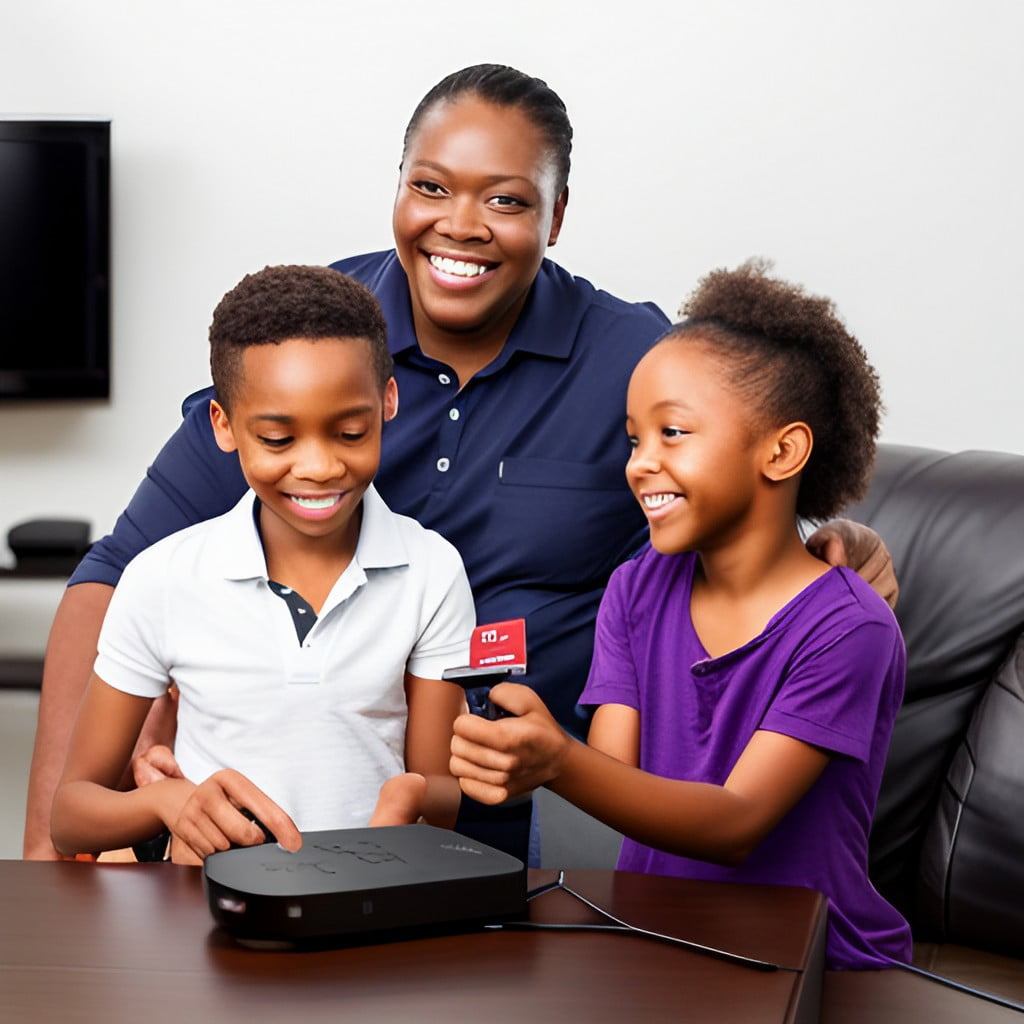Determining healthy limits for your kids screen time is crucial today but can also be challenging. This article provides tips to help parents manage their children’s technology use and set reasonable daily screen time limits.
Why Limiting Screen Time is Important
We live in a digital era where screens are ubiquitous. While technology keeps kids entertained and offers learning opportunities, too much screen time isn’t healthy. Excessive media exposure can negatively impact children’s cognitive, physical, and social development.
Setting limits helps ensure technology doesn’t interfere with activities like social interaction, playing, exercising, and sleeping. Screen time needs to be balanced with offline pursuits that are vital for growth.
This guide examines expert recommendations and offers parents actionable steps for limiting screen time to appropriate levels based on your child’s age.
Expert Recommendations on Screen Time Limits
Most major health organizations have issued screen time guidelines to protect children’s wellbeing. Their advice can inform the limits you set for your kids.
The American Academy of Pediatrics (AAP) recommends:
- No screens other than video chatting for children under 18 months old
- For kids ages 2 to 5, just one hour a day of high-quality programming with parent co-viewing
- Setting consistent limits on screen time as your child grows
Other experts suggest:
- No screens an hour before bedtime
- Keeping screens out of your child’s bedroom
- Turning off screens during family meals
- Avoiding screens for an hour after waking up to promote active play
While guidelines provide a reference point, you can tailor time limits to your family’s needs. Enforcing reasonable daily screen time rules now will set your kids up for healthier technology habits down the road.
Tips for Managing Your Child’s Screen Time
Follow these tips to effectively manage the time your kids spend on phones, tablets, computers, TVs, and gaming consoles:
Set Clear Limits
First, decide on time limits for your child based on their age and your family’s lifestyle. For example, 60 minutes on school days and 90 minutes on weekends. Clarify what activities screens can be used for.
Use Built-In Controls
Enable parental controls and app time limits that come with phones, gaming consoles, streaming devices. Password protect settings so your kids can’t override limits.
Designate Screen-Free Zones/Times
Keep family mealtimes, bedrooms, and play areas screen-free. Institute a daily “unplugged hour” when all devices are powered down.
Provide Engaging Alternatives
Have a ready list of screen-free activities like reading, crafts, hobbies, and outdoor play. Help kids transition seamlessly to these activities when screen time ends.
Be Consistent
Follow the limits diligently every day rather than just when convenient. Kids will adapt to consistent rules.
Set a Good Example
Limit your own technology use. Avoid phone fixation when with your kids. Power down at dinner and during family outings.
With the right balance of rules, controls, and engaging activities beyond the screen, you can effectively manage your kids’ technology use.
How Much Screen Time is OK Based on Age?
The ideal amount of daily screen time depends largely on your child’s age and maturity level. Here are some general screen time guidelines to follow by age group:
Under 2 years old
No screen time at all other than occasional video chatting. Babies and toddlers learn best through hands-on exploration of the real world.
Ages 2 to 5
Just 1 hour per day of high-quality programming co-viewed with parents, such as PBS Kids. Preschoolers benefit from activities that boost imagination and social skills.
Elementary School Age
Between 1-2 hours per day outside of online learning. Focus should still be on play, reading, and family time at this age. Use time limits and parental controls.
Middle School Age
2 hours per day maximum. Restrict social media and YouTube use which expose pre-teens to more risks. Set app time limits and monitor constantly.
High School Age
May require looser restrictions given academic needs and extracurricular activities. But continue using parental controls, setting daily time limits, and enforcing offline times.
As your child shows greater responsibility and academic needs evolve, gradually increase time limits while still maintaining consistent oversight.
What Counts as Screen Time?
Any technology your kids interact with throughout the day should count towards their daily screen time limits. This includes:
- Smartphones and tablet use
- Television viewing
- Computer use (includes homework)
- Video games and apps
- Virtual reality
- Streaming videos/movies
Don’t allow kids to go over set limits by using multiple devices. Track total daily screen time across all technology.
However, video chatting with friends and family can be excluded from limits to encourage meaningful connection. Just be sure to supervise young kids.
How Can Too Much Screen Time Negatively Impact Children?
Excessive media exposure can interfere with young people’s healthy development in many ways, including:
- Obesity risk from sedentary behavior
- Sleep disruption from blue light exposure
- Attention problems like ADHD from overstimulation
- Social isolation and less family engagement
- Exposure to inappropriate content and cyberbullying
- Less time for vital academic and developmental activities
Setting limits prevents technology from impeding your child’s cognitive, physical, social, and emotional growth.
Signs Your Child is Using Screens Too Much
Watch for these signs that the time your kid spends on digital devices may be excessive:
- Fixation on screens and resistance when time limits are enforced
- Lack of interest in other activities like reading or playground time
- Abandoning formerly beloved toys and hobbies
- Anger, moodiness, or depression when forced off devices
- Difficulty completing tasks or paying attention during screen-free times
- Problems at school related to lack of sleep or learning challenges
- Arguing with parents, siblings, or friends more frequently
Use such warning signs to reassess your child’s time limits and adjust as needed to ensure their overall wellbeing.
Make Parental Controls and Settings Work for You
Take advantage of built-in parental controls to enforce healthy limits. Understand how to use settings on the platforms your kids use most.
On iPhones/iPads: Use Screen Time settings to block apps, set app limits, restrict content, and schedule downtime.
On Android: Use the Family Link app to control apps, set screen time limits per app, and restrict content.
On Windows PCs: Use Family Safety controls to set time limits per app, view activity reports, and limit gaming.
On Game Consoles: Set restrictions on play time and content using parental controls on Xbox, Playstation and Nintendo Switch.
On Smart TVs: Restrict channels and content and set viewing time limits based on your child’s profile.
On Streaming: Create kids profiles on services like Netflix, Hulu, Disney+ with restrictions.
Don’t forget to secure settings with a PIN to prevent kids circumventing the limits. Take time to explore all your parental control options.
Make Screen Time Family Time
One way to manage your kids’ technology use is turning it into an interactive, relationship-building experience. Sit with your child as they play video games, watch shows, or use apps.
Ask engaging questions about what they are seeing and doing on the device. Relate it to real life examples that build critical thinking. Make screen time an opportunity for bonding and imparting valuable lessons.
Co-viewing also allows you to ensure your child is accessing age-appropriate content. Guiding your kids’ technology use helps achieve a healthy balance.
Key Takeaways
- Set reasonable time limits based on your child’s age and needs
- Use built-in parental controls across all devices
- Designate screen-free locations and times
- Provide fun alternatives to technology
- Be consistent enforcing rules
- Set a positive example by managing your own screen time
- Make co-viewing and co-play a priority
- Continually reassess limits as your child’s needs evolve
The goal should be keeping your kids safe and healthy, not totally screen-free. With your guidance, technology can be educational and fun while also allowing for richer experiences beyond the screen.



